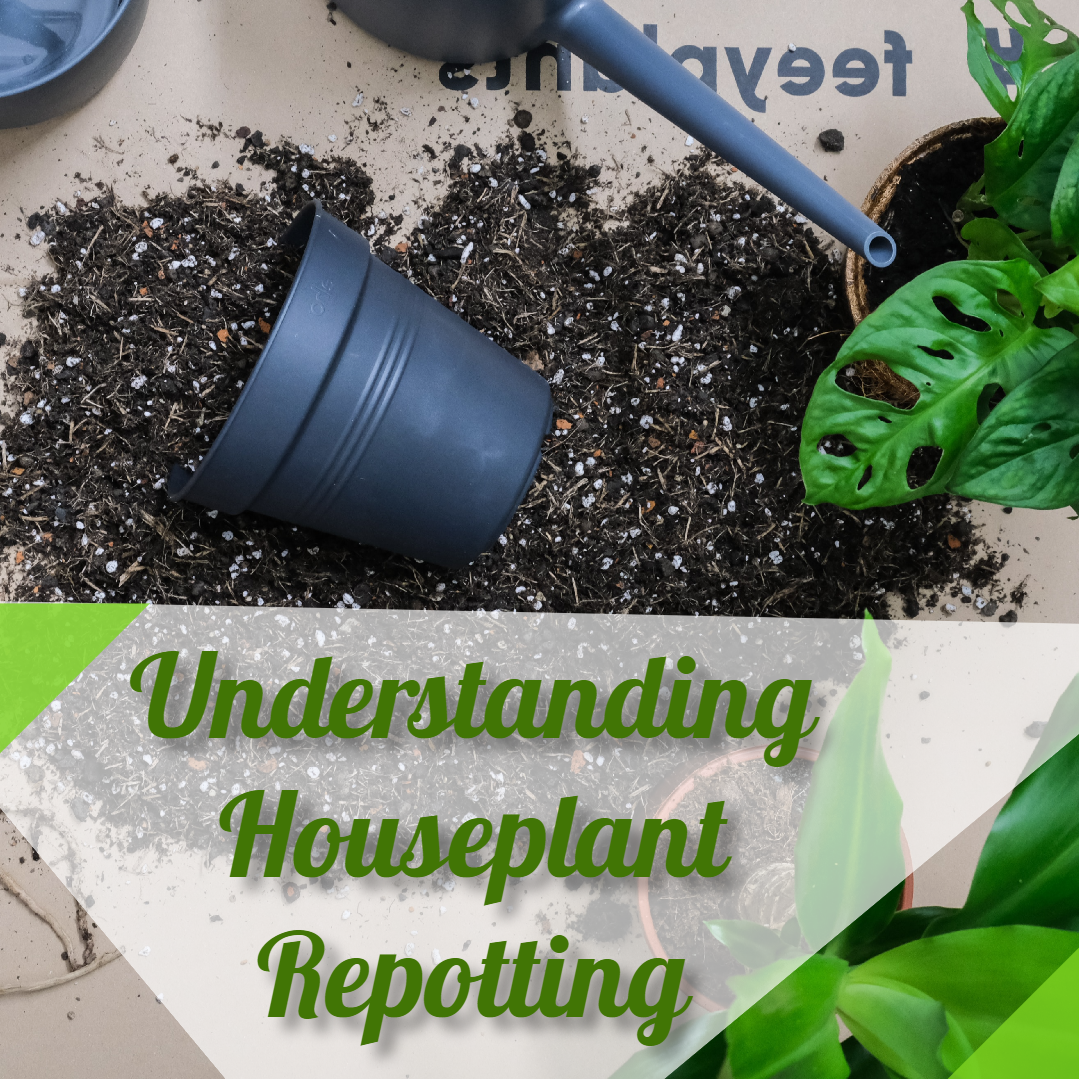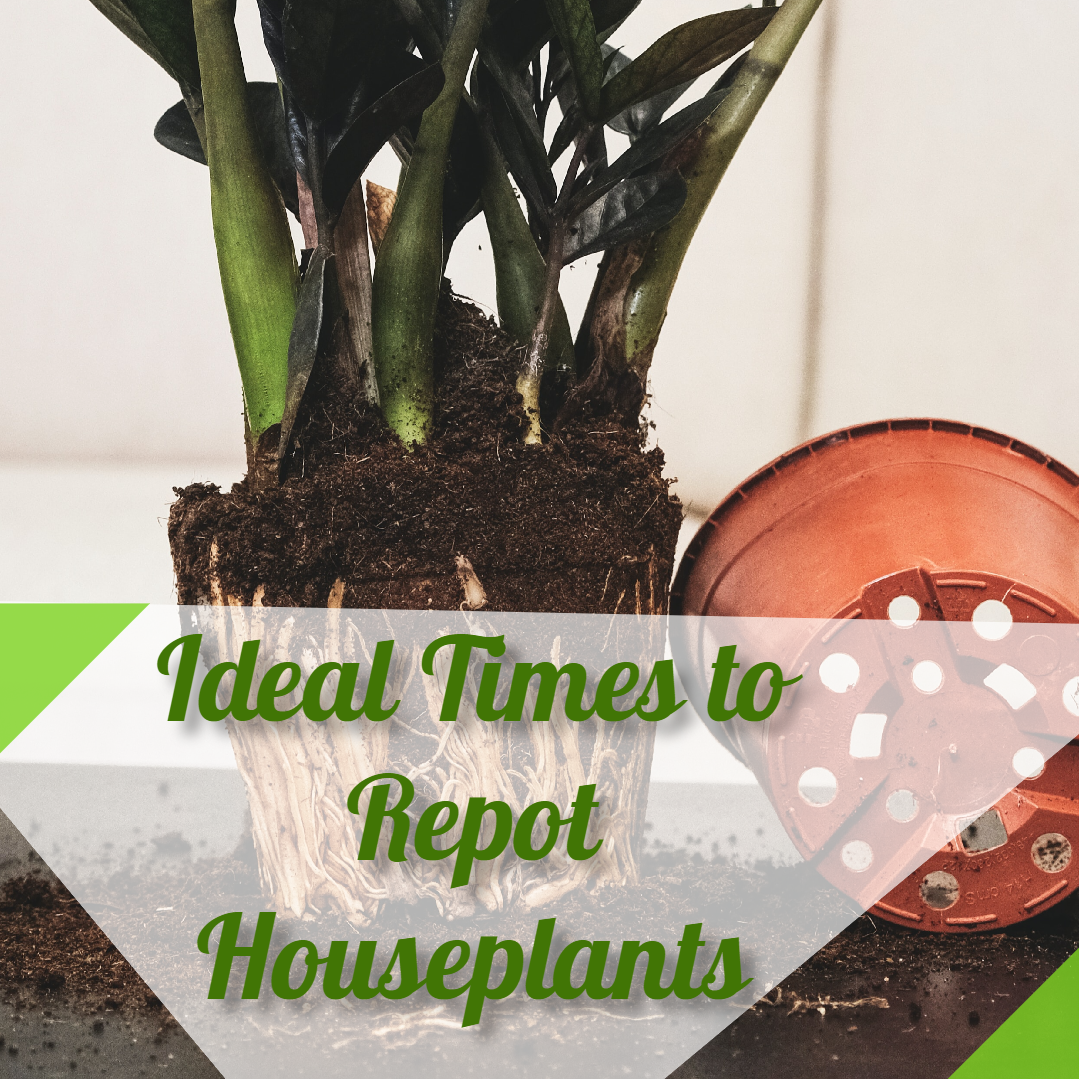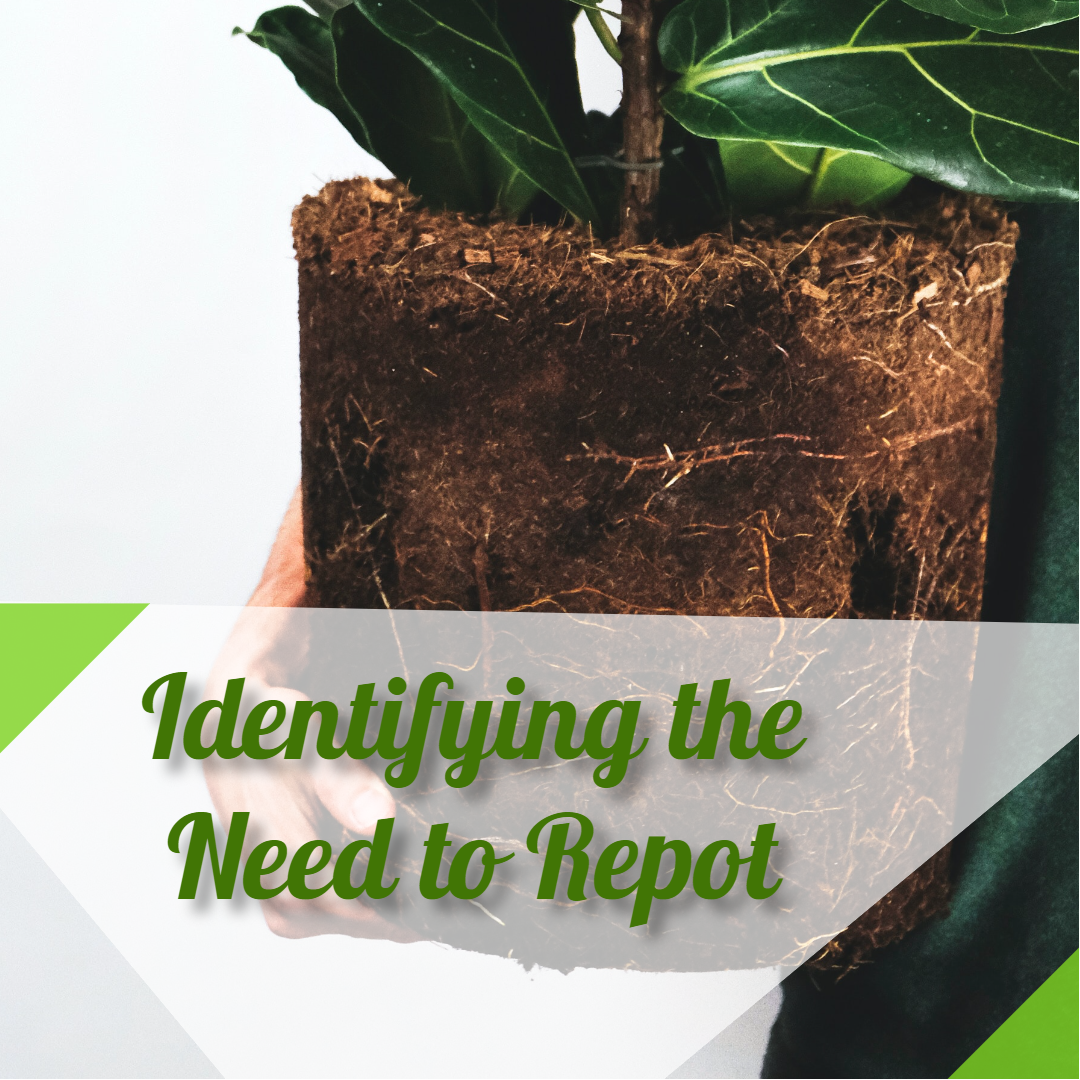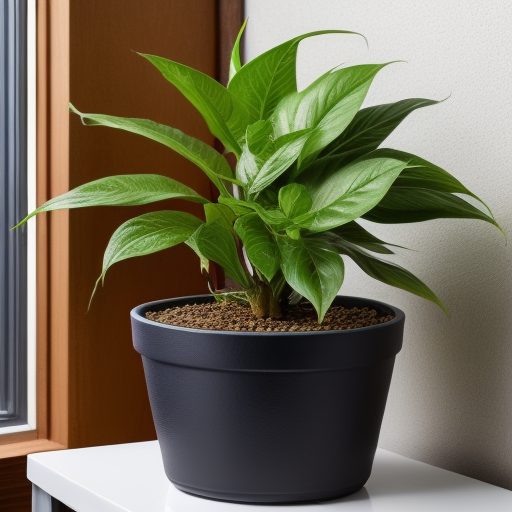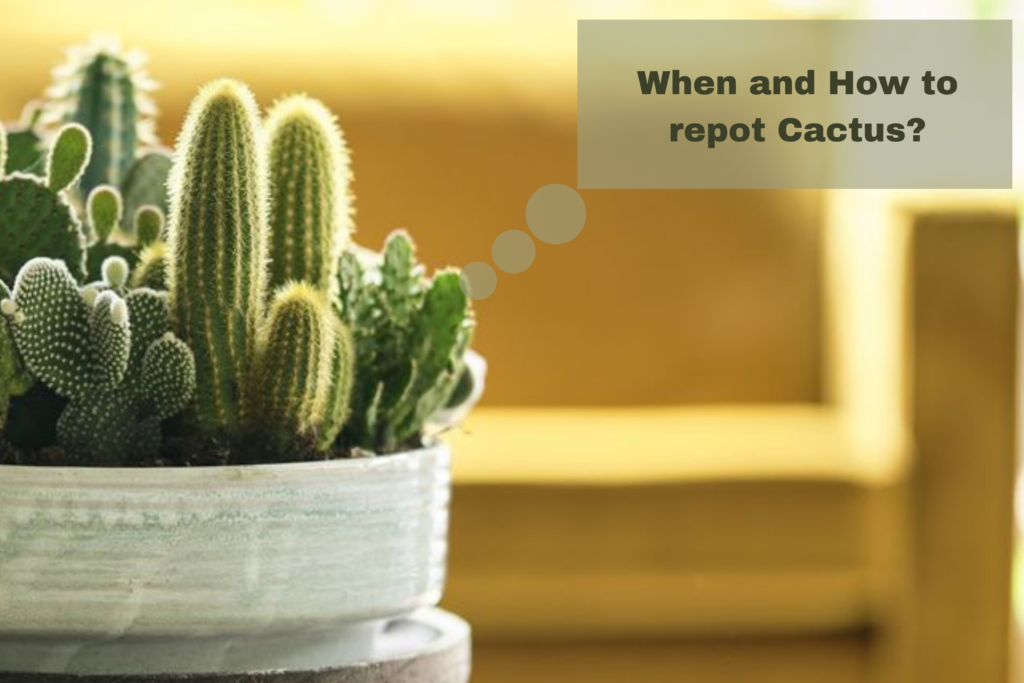HousePlantJoy is supported by our audience. When you purchase through one of our links, we may earn a small affiliate commission. As an Amazon Associate I earn from qualifying purchases. Your cost is not affected.
==================
Hey there! Want to know when to report your houseplants? Well, houseplants require repotting to ensure their continued growth and health. Repotting refers to the process of transferring your plants to a new pot with fresh soil, promoting increased root space and nutrient availability. The ideal frequency for repotting depends on factors such as the plant’s growth rate, size, and overall health. For instance, some houseplants benefit from annual repotting in their early stages, while mature plants may only require repotting every three to four years.
Plus, understanding when to repot your houseplants is crucial to their long-term well-being. It is essential to observe your plants for signs that they need repotting, such as roots protruding from the pot’s bottom or stunted growth. Additionally, considering factors like the choice of new pots and soil type plays a significant role in the success of repotting efforts. Overall, repotting houseplants on time can contribute immensely to the plant’s vitality, aesthetics, and longevity.
Key Takeaways
- Repotting ensures healthy growth and nutrient availability for houseplants
- Observing plants for signs like protruding roots or stunted growth helps determine the need to repot
- Choosing the appropriate pot and soil type is crucial for successful repotting
Understanding Houseplant Repotting
Yes, I understand you, buddy! Understanding something is challenging at the beginning, but understanding repotting houseplants is an essential part of maintaining their health and encouraging growth. The best time of year to repot houseplants is in the spring, before new growth occurs. This allows the plants to take advantage of the fresh soil and nutrients during their most active growing period.
Most houseplants benefit from repotting every one to two years in the early stages of growth or every three to four years for larger, mature plants that mainly require new soil. Some plants, like African violets, may need more frequent repotting to keep them looking their best.
Several signs indicate your houseplant requires repotting. Roots protruding from the bottom of the pot or stagnation in growth can signal the need for a new pot. Another sign is when the plant requires more water than usual, which might indicate that it has outgrown its current container, leaving little room for moisture retention in the soil.
To Add
When repotting a houseplant, it is essential to choose an appropriate pot size and ensure it has proper drainage. A pot that is too large will hold excess moisture, potentially leading to root rot, while a pot that is too small may constrict the plant’s growth. Select a container with drainage holes, crucial for preventing root rot and maintaining healthy soil moisture levels.
Preparing the plant for repotting involves carefully removing it from its current pot and loosening the roots. Clean the root system by removing any decayed roots or old soil, as this will promote new growth and a healthy root system. Additionally, using a quality potting mix designed for houseplants will provide the plant with the necessary nutrients it needs for optimum growth.
In summary, understanding when and how to repot your houseplants is crucial for their overall health and growth. By monitoring your plants for signs of needing repotting, and following the proper techniques, you can ensure that your houseplants will continue to thrive and bring beauty and fresh air to your living space.
Explore these exceptional pots we’ve uncovered, ideal for your gardening and repotting essentials. We couldn’t resist sharing our top finds with you. #ads #commissionsearned
Ideal Times to Repot Houseplants
Now let’s talk about the best times to repot your houseplants. Knowing the ideal moments to switch up their pots can boost their health and growth. It’s like giving them a fresh start. So, when is the perfect time to make the move? Let’s dive in and find out!
Seasonal Changes
Spring is the best time to repot houseplants, as it provides an ideal environment for new growth. During this season, increased sunlight and warmer temperatures trigger an instinctive plant reaction, stimulating growth. Repotting in spring allows plants with overgrown and crowded roots more room to expand and flourish in their new pots.
Growth Rate
The growth rate of a houseplant is another factor to consider when deciding to repot. For most plants, repotting should be done every one to two years, depending on their size and how quickly they grow. However, for plants that are growing very rapidly, it may be necessary to repot them more frequently. Always observe your houseplants closely and look for signs that they require repotting, such as roots growing from the bottom of the pot or the plant becoming too big for its current container.
Condition of the Plant
Some common signs indicating that a houseplant needs to be repotted include:
- Soil losing nutrients: The potting medium gradually loses nutrients over time, eventually depleting and unable to support plant growth. In such cases, repotting with fresh soil can provide the plant with the necessary nutrients to thrive.
- Soil becoming hydrophobic: As the potting mix ages, it might become water-repellent, preventing proper water absorption by the plant. Such instances call for repotting the houseplant to restore its ability to absorb water efficiently.
- Root overcrowding: Over time, a plant’s root system might outgrow its current container, leading to overcrowding and stunted growth. Repotting in a larger pot allows sufficient space to accommodate a growing root system.
In conclusion, repotting houseplants is an essential aspect of their care, with the ideal timing determined by seasonal changes, growth rate, and the overall condition of the plant. Regular observation and monitoring of your houseplants will ensure that they remain healthy and vibrant throughout the year.
Identifying the Need to Repot
Did you know that your plant might drop a few hints when it’s time for a new pot? Paying attention to these signs is super crucial because repotting at the right moment can boost your plant’s health and growth. There are three main things to look out for that tell you it’s time: roots popping out everywhere, soil getting too tight, and if your plant looks under the weather.
Overgrown Roots
One common sign that your houseplant needs repotting is the appearance of overgrown roots. This can be observed when roots grow out of the drainage holes or become visible at the soil surface. Roots may also create a dense mat at the bottom of the container, which limits proper water and nutrient absorption. When this happens, it’s essential to provide your plant with a larger pot to promote healthy growth and prevent root-bound issues.
Compacted Soil
Another reason for repotting is compacted soil. Over time, the soil in the pot loses nutrients and becomes tightly packed, making it difficult for the plant’s roots to access water, air, and essential nutrients. Compacted soil may also result in waterlogging or reduced drainage, leading to poor health or root rot. If you notice that the soil in your plant’s pot has become hard and dry, it’s time to consider repotting with a fresh, well-draining potting mix source.
Plant Illness
Finally, repotting may become necessary when dealing with plant illness. Diseases, pests, or root rot can significantly affect a plant’s health. If you notice any unusual symptoms, such as yellowing leaves, stunted growth, or a wilting appearance despite proper care, it’s crucial to diagnose the issue and take appropriate action. In some cases, repotting the plant in fresh, sterile soil while treating the problem can help to revive a struggling houseplant and promote new growth.
Choosing the Right Pot
When giving your houseplant a new home, picking the right pot is a big deal. You must think about a few things, like how big the pot is, what it’s made of, and if it’s got good drainage. The size matters – not too big, not too small, just right for your plant to stretch its roots comfortably. Then there’s the material: plastic, ceramic, terracotta – each has perks. And don’t forget those holes at the bottom for good drainage. All these factors play a role in making sure your plant settles into its new pot just right.
Size of the Pot
The size of the pot should provide enough room for the plant’s roots to grow without being too spacious. A general guideline is to choose a pot that is 1 to 2 inches larger in diameter than the plant’s current pot. This allows the roots to expand comfortably without being overwhelmed by excess soil, which can lead to root rot. For fast-growing plants like Begonia and Epipremnum, it’s essential to choose the right pot size, as they require repotting more frequently.
Material
Pot materials vary in their ability to retain moisture and insulate the plant’s roots. Popular choices include:
- Plastic: Lightweight and affordable, plastic pots are ideal for houseplants that require frequent watering. However, they may not be suitable for exceptionally heavy plants.
- Ceramic: Heavier and more decorative, ceramic pots can provide better insulation for plant roots but are generally more expensive than plastic pots.
- Terracotta: Known for its porous characteristics, terracotta pots help wick away excess moisture, making them perfect for houseplants that prefer drier conditions, such as cacti and succulents.
It’s essential to choose a material that best suits your plant’s specific needs for optimal growth.
Drainage System
A proper drainage system is vital, as it ensures that excess water doesn’t accumulate and lead to root rot. When looking for a pot, ensure it has drainage holes at the bottom. Additionally, use a saucer beneath the pot to catch any excess water. An alternative to traditional drainage systems is self-watering pots, which can help regulate moisture levels more effectively.
In summary, when repotting a houseplant, carefully consider the size of the pot, the material it’s made of, and the drainage system to ensure your plant thrives in its new container.
Repotting Process
Let’s dive into the repotting process – the guide to giving your beloved houseplants a new and refreshed home. This process ensures a smooth transition for your green companions into a more spacious and nutrient-rich environment. So, let’s break down the essential steps to help your plants settle into their new pots and continue thriving.
Preparation
Before repotting, it’s crucial to water the houseplant about half an hour earlier to minimize plant shock. Choose the appropriate size pot and drainage layer for the plant, ensuring there are holes for excess water to exit. Gather fresh potting soil and any tools like gloves, trowels, and pruning shears that may be required.
Execution
Start by gently removing the plant from its current pot, being cautious not to damage its root system. Trim off any dead or damaged roots and loosen any circling roots. Add a thick layer of fresh potting mix at the bottom of the new container. Place the plant inside the pot while making sure it has a good foundation without air pockets. Adjust the remaining soil around the edges, and tamp it gently to remove air pockets.
Post-Repotting Care
After repotting, water the plant thoroughly and ensure proper drainage to avoid standing water. Keep an eye on the plant’s progress in the following weeks. It may take some time for the plant to adjust to its new environment, so don’t panic if it doesn’t thrive immediately. Continue watering and caring for the repotted plant as required, and be patient as it grows into its new living space.
Credits: This is a Plant
Once more, we are confident in the quality of these outstanding discoveries and are thrilled to present them to you. #ads #commissionsearned
Start Repotting Your Houseplants
In conclusion, repotting your houseplants is like upgrading their living space. It’s super important for their growth and health. Spring is when they’re ready for a change. Young plants like a new pot every 1-2 years, while older ones are good for about 3-4 years.
If you notice roots peeking out or the soil getting complicated, it’s probably time. Get a slightly bigger pot with holes in the bottom for good drainage. Before and after the move, give your plant a drink. Use excellent, fresh soil in the new pot. Your plants will love their new digs and thrive happily.
FAQs
How often should I repot my indoor plants?
The frequency of repotting indoor plants varies depending on factors like the type, size, and growth rate of the plant. Generally, most houseplants require repotting every 1 to 2 years, but some slow-growing plants may need it less frequently. It is important to monitor your plant’s condition and look for signs that it needs repotting.
What are the signs that my houseplant needs repotting?
There are several signs that might indicate it’s time to repot your houseplant:
- Roots growing out of drainage holes or visible on the soil surface.
- The plant has grown too large for its container or appears top-heavy.
- The soil dries out quickly or requires more frequent watering than usual. This might indicate the plant has become root-bound.
- The plant shows signs of stress like wilting or yellowing leaves, even with proper care and watering.
What size pot should I choose for repotting?
When it comes to selecting a pot for repotting your houseplant, choose one about 1 to 2 inches larger in diameter than the current pot. This allows enough room for the roots to grow without being cramped while also preventing the plant from becoming unstable or top-heavy. Make sure the new pot has proper drainage holes to prevent overwatering and root rot.
Which season is best for repotting houseplants?
The best time for repotting houseplants is typically in the spring, when most plants begin a new growth cycle. Spring temperatures and increased daylight hours provide favorable conditions for plants to establish themselves quickly in their new pots. However, some plants might benefit from being repotted at different times of the year, depending on their specific growth patterns.
What should I consider regarding drainage during repotting?
Drainage is crucial for maintaining the health of your houseplants. When repotting, ensure that the pot has proper drainage holes and use a well-draining soil mix. You can also add a layer of coarse material, like small stones or pebbles, at the bottom of the pot to improve drainage. Additionally, avoid overwatering your plants, as this can lead to root rot and other issues related to poor drainage.
?Repotting Made Easy – Elevate Your Plant Parenthood! ?
Ready to level up your plant game? Get your hands dirty and show your leafy pals some love with our top-notch repotting essentials.
? Upgrade Their Digs: Find the perfect pots – not too big, not too small, just right for your plant’s happy roots.
? Drainage Done Right: Keep root rot at bay with pots that let water escape, giving your plants the balance they need.
? Get Your Hands Dirty: Gently repot your plants, cleaning those roots and refreshing their soil for a growth boost.
? Watch Them Thrive: Give your plants the space and nutrients they crave. It’s the secret to a green paradise right in your home!
Don’t forget to follow our socials:
Empower yourself to be the best plant parent! With our top-notch repotting tools and tips, you’re just a step away from seeing your indoor jungle grow and glow!



